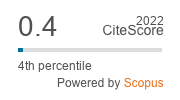Comparative studies of mymarid diversity from three different zones of paddy ecosystem in Tamil Nadu, India
DOI:
https://doi.org/10.33307/entomon.v44i3.458Abstract
Surveys were conducted to explore the mymarid fauna from three different rice growing zones viz., western zone, Cauvery delta zone and high rainfall zone in Tamil Nadu during 2015-16. In the present study, 92 mymarid parasitoids comprising of 8 species under 7 genera viz., Anagrus sp., Anaphes sp., Camptoptera sp., Dicopus longipes (Subba Rao), Lymaenon delhiensis Narayanan and Subba Rao, Lymaenon munnarus Mani and Saraswat, Mymar pulchellum Curtis and Ptilomymar dictyon Hayat and Anis were collected. Alpha and beta diversity were computed for the three zones and the diversity indices (Simpson’s index, Shannon-Wiener index, Pielou’s index) revealed high rainfall zone as the most diverse zone, while Cauvery delta zone being the least diverse. Dicopus longipes is found to the predominant species in rice ecosystem. Jaccard’s index of species similarity comparison revealed 42.5 per cent similarity between western and Cauvery delta zones and 62.5 per cent similarity between high rainfall and Cauvery delta zones and 62.5 per cent similarity between high rainfall and western zones. Correspondence analysis and Bray-curtis cluster analysis were also done to understand the diversity assemblage of the mymarids that were collected.


